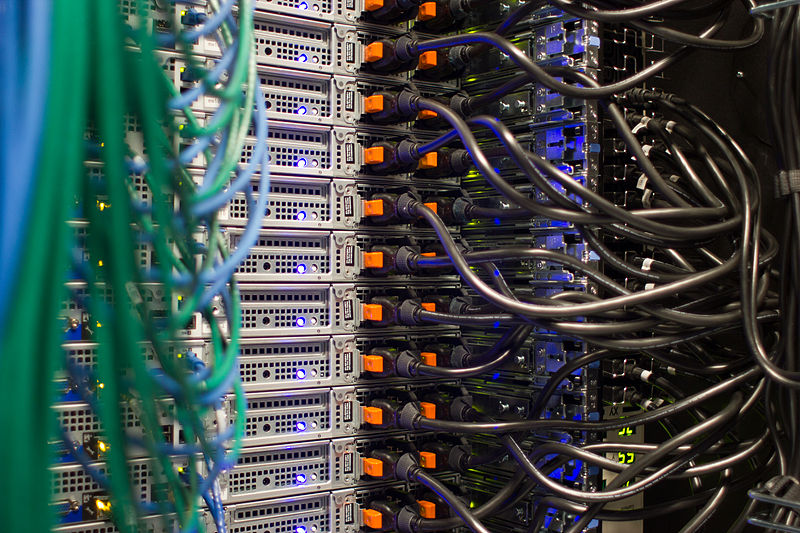
Edge Computing Can Transform Your Cloud
Fool me once, shame on you; fool me twice, shame on me.
Remember when big enterprise IT providers wanted you to put their cutting-edge hardware in your server room to upgrade your infrastructure? They promised you the best technology, industry-leading software, and a much better return on your investment than building your own solution. I remember those times because they were today as a matter of fact.

Understanding What’s Best for Your Architecture
Products like Google Anthos and AWS Outpost give you the benefits of the cloud on-premises because sometimes the cloud is not good enough on its own. Moving the data center closer to your users or to the location where your data is generated can give you big improvements in performance. In addition, a hybrid cloud strategy can help you tailor your cloud infrastructure to meet your needs and control your costs.
However, it is funny to think that cloud providers like Google and AWS are so eagerly pushing their customers to move the cloud back on-premises after years of pushing those same customers to move off-premises into the cloud. The move probably was a good move for most users, but many users probably also suffered from adopting cloud technologies or architectures without understanding what that means or using applications that were made for the cloud.
A hybrid cloud strategy can help you tailor your cloud infrastructure to meet your needs and control your costs.
Edge Computing Products are Great Solutions for a Cloud-Based Architecture
Cloud technologies are hard to use sometimes, unfortunately. I have seen this firsthand with the race to adopt Kubernetes and leverage cloud technologies to build a CI/CD pipeline for streamlined deployments, but the applications being deployed have no automated tests (e.g. unit tests, system tests, function tests, integration tests) written to verify deployments. That fancy cloud deployment platform is not going to help if you do not have the knowledge or the infrastructure in place to get the most value out of it.
Edge computing products that move the cloud closer to you are probably good solutions, especially for teams who have already successfully made the transition to a cloud-based architecture. It is very important, however, for companies new to the cloud or who have had difficulty with the cloud to consider carefully if a solution like Google Anthos or AWS Outpost is the answer to their problems. There are several questions that you can ask yourself to determine if you are cloud-ready:
- Do I have containerized applications?
- What kind of uptime do I need?
- How much data loss can I accept?
- How automated are my current deployments?
- What is my plan for managing and supporting a cloud-based infrastructure?
- What privacy or data security concerns do I have for the data I store?


Pay Attention to Requirements When Considering Edge Computing for Improved Performance
One of the things cloud providers do not generally tell you about cloud services or products is that they are still relatively complex and require specialized skills to use. Sure, anyone can spin up a virtual machine instance on the free tier of a major public cloud in a few clicks, but what next? Do you know how to log in to the virtual machine instance and deploy your application? What about managing DNS records, IP addresses, security access controls, networking, and so many other configuration options?
The cloud takes away the trouble of doing these things on physical devices in person, but you still have to understand all of the pieces of your infrastructure puzzle in order to move your applications or workloads into the cloud. If you are cloud-native already and considering edge computing for improved performance or for meeting data residency or privacy requirements, pay careful attention to your actual requirements and the improvements you need to see.
Cloud providers won’t tell you that their cloud services or products are still relatively complex and require specialized skills to use.
The Cloud Requires a Certain Level of Skill, Knowledge, and Planning to See the Benefits of Cloud Computing
In many cases, latency-related performance issues can be helped by adding or moving regions with your existing cloud infrastructure or utilizing caching strategies to improve data access. Of course, there will be workloads that are extremely latency-sensitive or sensitive to loss of cloud connectivity that would be better served by an on-premises solution.
Data residency and privacy requires thoughtful planning to avoid unintentionally shifting data off-premises. This is a potential risk if your on-premises edge computing solution fails over or replicates to an off-premises cloud for backups or disaster recovery. Many cloud technologies support this kind of functionality, and some may enable it by default because it is usually desirable.
The cloud is a great tool. It has much value to offer to teams who want to do their work more quickly, more easily, or more cost-effectively, but like any tool, the cloud requires a certain amount of skill, knowledge, and planning to see the benefits of cloud computing.
Looking for hosted private cloud, infrastructure as a service, or bare metal solutions? An OpenMetal Private Cloud is a powerful private cloud solution that gives you the security and performance you need to successfully run your business. Learn more about the OpenMetal Infrastructure as a Service.

Test Drive
For eligible organizations, individuals, and Open Source Partners, Private Cloud Cores are free of charge. Qualify today.
Subscribe
Join our community! Subscribe to our newsletter to get the latest company news, product releases, partner updates, and more.



































